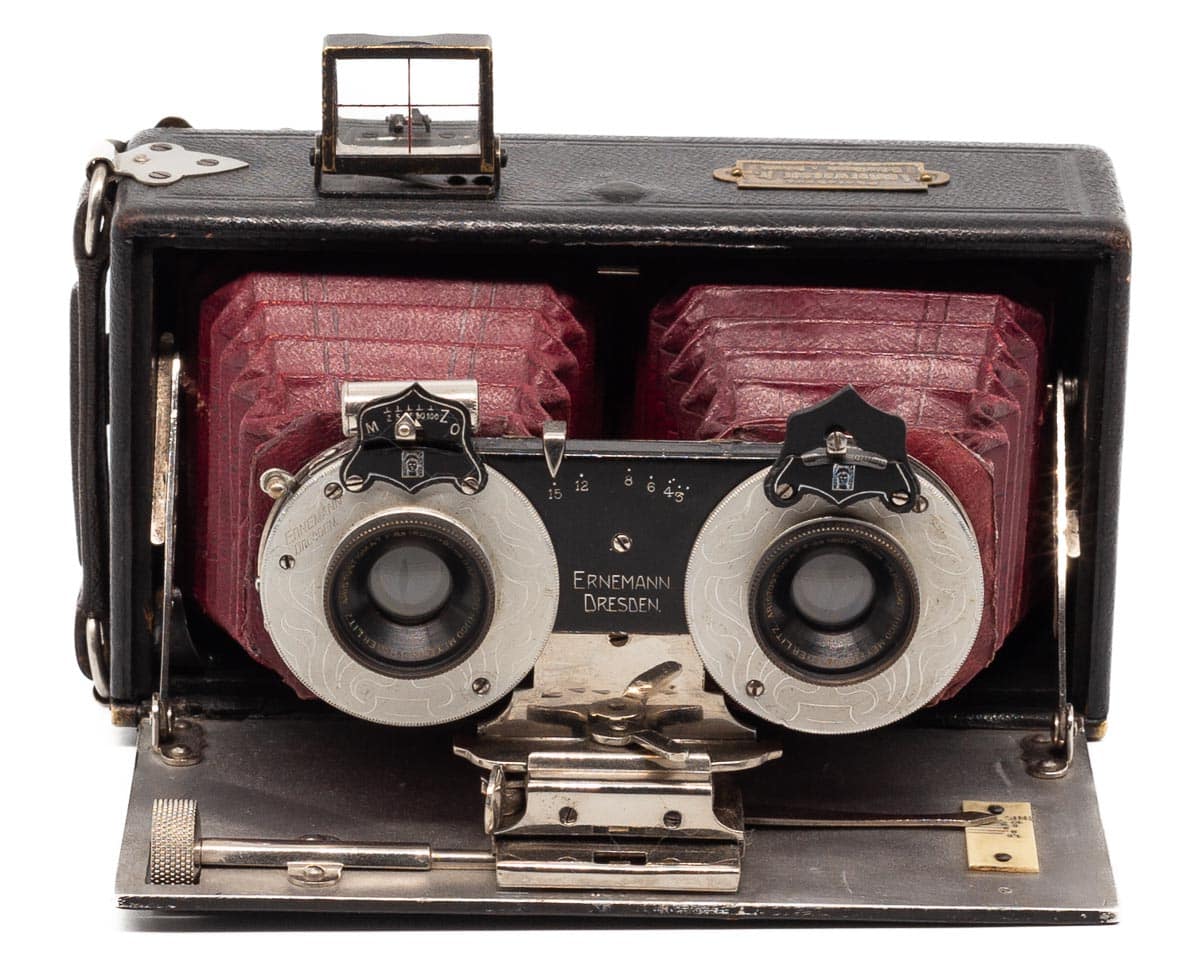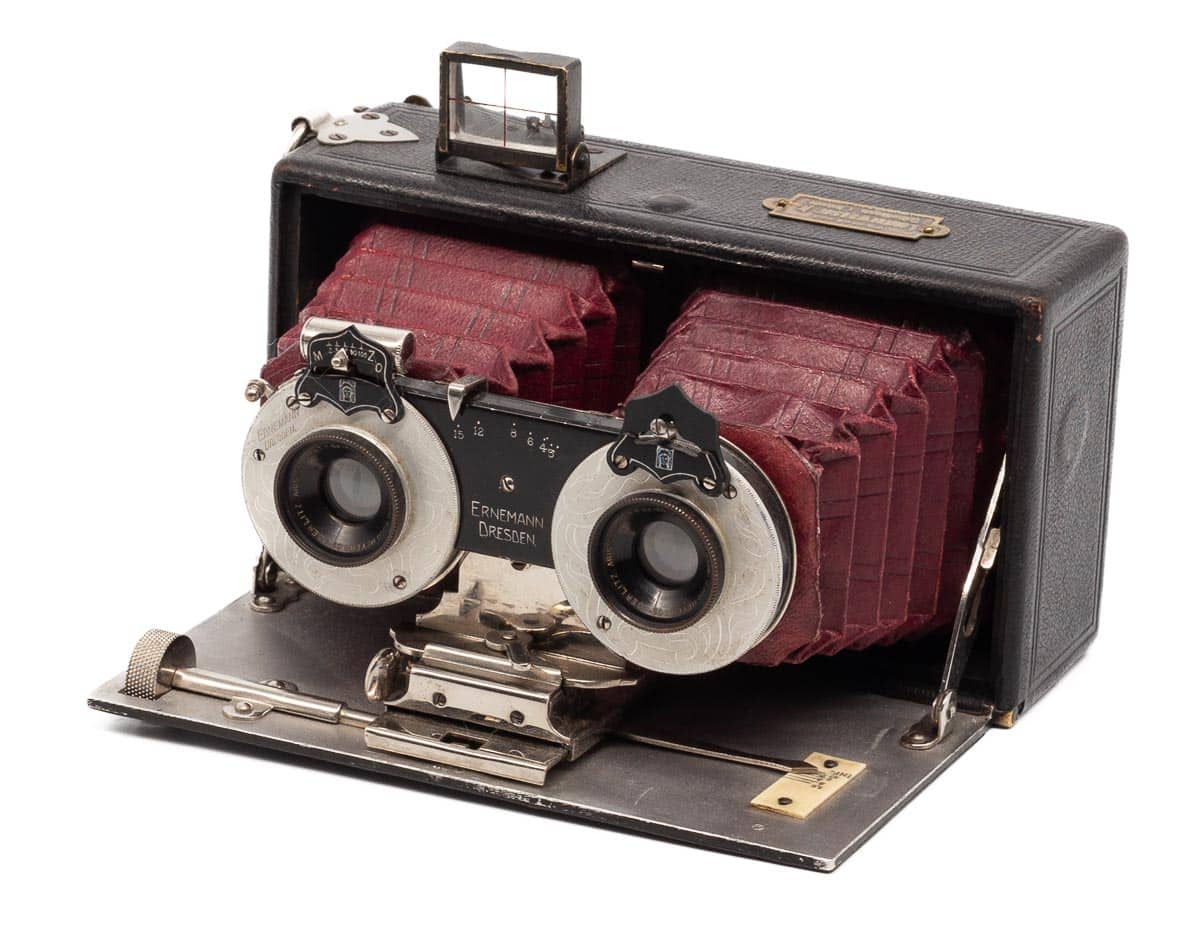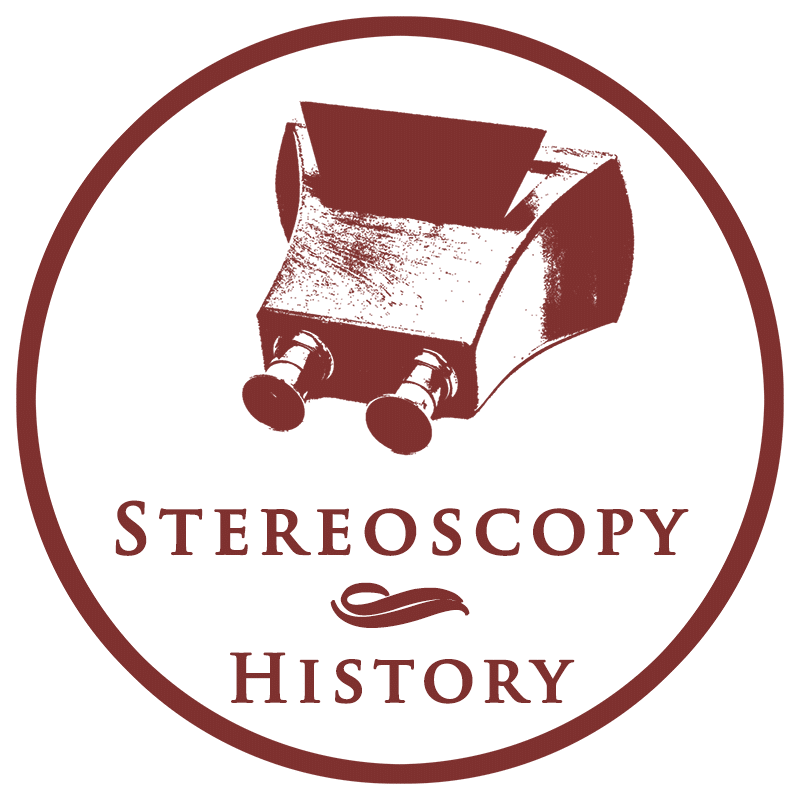
The Heag series of folding cameras were manufactured by Ernemann between 1900 and 1926. The abbreviation Heag stands for Heinrich Ernemann Actien Gesellschaft. Most of the cameras in the Heag series were designed for glass plate negatives. The cameras could be completely folded so they were easy to carry and the lenses and shutter were protected.
The Heag XV was available as conventional single lens camera and as stereo camera. The stereo camera was manufactured, at least, until 1918 and was available for the glass formats 45 x 107 mm and 6 x 13 cm.
The camera in this post has an attractive appearance with dark red folding covers. It distinguishes the camera from the all-black versions that were more common. The front panel with the shutter and lenses has two stylish settings panels with the Ernemann logo.

On top is a folding crosshair viewfinder and a plate with the name of the retailer, Photohaus Lauterwasser – Überlingen am Bodensee. It refers to a photo studio in Überlingen that was founded by Alexander Lauterwasser in 1867. The studio still exists today and is managed by the fifth generation of the Lauterwasser family.
Specifications
| Manufacturer: | Ernemann, Dresden |
| Year of introduction: | c. 1911 |
| Year of manufacture: | c. 1911–c.1925 |
| Type: | Stereo camera |
| Serial number: | None |
| Negative type: | Glass |
| Negative format: | 45 x 107 mm |
| Lens: | Two 90mm f/6.8 Hugo Meyer & Co – Goerlitz aristostigmat lenses |
| Serial number lens: | None |
| Lens aperture: | Settings: 4.5, 6, 8, 12, 15. |
| Focus: | Yes |
| Shutter: | Five shutter speeds |
| Dimensions (L x W x H): | 16 x 12.5 x 9 cm (expanded) |
| Construction: | Metal and leather |
Glossary: aristostigmat lens / negative
Ernemann
In 1889, Heinrich Ernemann formed together with Wilhelm Franz Matthias the Dresdner photographische Apparate-Fabrik Ernemann Matthias. Matthias left the company in 1891, and Ernemann continued the business activities alone. From 1899, the company was called Heinrich Ernemann, Aktiengesellschaft für Camerafabrikation in Dresden. The company only produced the wooden parts of a camera, the other parts were supplied by other manufactures. It switched to the production of complete cameras later, and Ernemann became a renowned manufacturer of photographic and film cameras. During the company’s lifecycle it produced a wide range of high-end cameras, but it also manufactured hand-held and tabletop stereoscopes.
The factory was located in the Striesen district of Dresden and was expanded in phases. The original building dated from 1898 and contained the mosaic Lichtgöttin (goddess of light). It was designed by the Art Nouveau painter Hans Unger. It was the famous trademark from 1903 to 1920. The factory was expanded with a central tower after the First World War. The buildings still exist today and the tower is now known as the Ernemann Tower. In 1926, Ernemann merged with ICA, Goerz and Contessa-Nettel to the new Zeiss Ikon company.
Bibliography
- Göllner, P. (1995) Ernemann Cameras. p. 203.
External links
- Die Geschichte von Foto Lauterwasser. Via: foto-lauterwasser.de
